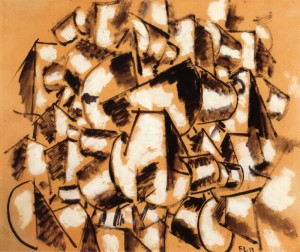
Tangled Up in Blue: James Turrell’s Virtual Vision
Take, for example, Turrell’s description of one of his recent ganzfeld chambers at the Henry Moore institute in Halifax, England: “It could induce an epileptic fit. You could really render someone useless if you choose to. The Henry Moore Institute had to have a neurologist from London…. It is serious business from that point of view. But there have been art pieces, by Christo and Serra, that actually killed people. I don’t in any way intend that…. It is invasive, closing your eyes will not stop this…”



